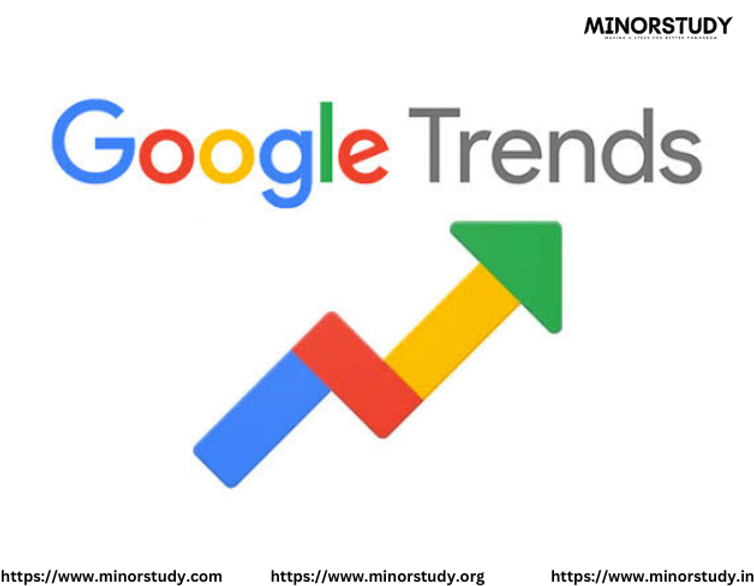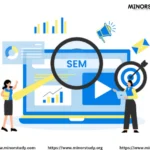🌟 All About Google Trends: A Simple Tool with Game-Changing Impact
Google Trends: In a digital world flooded with data, knowing what people are searching for—right now—can give you a massive edge. Whether you’re a student, entrepreneur, blogger, or digital marketer, Google Trends provides a clear window into the public consciousness. It tells you what the world cares about—moment to moment.
- 🌟 All About Google Trends: A Simple Tool with Game-Changing Impact
- 📜 History of Google Trends: From Experiment to Essential Tool
- 💡 7 Incredible Facts About Google Trends
- 📅 Timeline of Google Trends (Key Moments)
- ❓ Frequently Asked Questions (FAQs)
- Q1. What is Google Trends?
- Q2. Is Google Trends data reliable?
- Q3. Who should use Google Trends?
- Q4. Is Google Trends free?
- Q5. Can Google Trends show location-based data?
- 🎯 Significance of Google Trends in Modern Life
- 📈 For Marketers and Businesses:
- 🎓 For Students and Researchers:
- 📰 For Journalists and Bloggers:
- 📲 For Content Creators:
- 🧠 For Everyday Curiosity:
- 🧭 Importance in Our Personal and Professional Lives
- 💖 Wishing Messages for Google Trends Enthusiasts
- 📌 Important Points to Remember
- 🌍 Importance to Society
- 1. Transparency:
- 2. Democratization of Data:
- 3. Support for News and Public Policy:
- 4. Social Awareness:
- 🧠 Daily Life Impact: How It Touches Us All
- 📚 Conclusion: Why Google Trends Is a Tool for Everyone
This isn’t just a tool. It’s a real-time cultural radar, a strategic ally, and a data playground all rolled into one.
📜 History of Google Trends: From Experiment to Essential Tool
Launched in 2006, Google Trends started as an experimental way to make Google search data accessible to the public.
Back then, search data was tightly held by Google for internal use. But opening it up even partially was revolutionary—it gave everyone the power to observe search trends as they happened.
Milestones in Google Trends’ Evolution:
2006: Google Trends launches with historical search data and simple comparisons.
2008–2011: Interface updates, integration with Google Insights.
2012: Becomes real-time with daily updates.
2015: Major redesign, addition of news and YouTube trends.
2020: Used extensively to track COVID-19-related searches and lockdown behaviors.
2023: Enhanced visualization tools and category filters.
Now, Google Trends is used by researchers, marketers, politicians, journalists, and even everyday people trying to figure out what the world is curious about.
💡 7 Incredible Facts About Google Trends
Real-Time Data Access: Google Trends lets you view data as recent as the past hour.
Globally Available: You can view trends for over 150+ countries.
Category Filters: Explore topics like health, tech, politics, finance, and sports.
Visual Mapping: Trends can be viewed geographically by region or city.
Compare Up to 5 Topics: Perfect for competitive research or curiosity.
YouTube Search Data: Great for video content creators.
Used in Journalism: Top media houses like CNN and BBC use Trends to shape content.
📅 Timeline of Google Trends (Key Moments)
| Year | Event |
|---|---|
| 2006 | Google Trends launched |
| 2008 | Google Insights added |
| 2012 | Real-time data introduced |
| 2015 | News & YouTube data included |
| 2020 | Used to monitor pandemic behavior |
| 2023 | Introduced new topic breakdown filters |
❓ Frequently Asked Questions (FAQs)
Q1. What is Google Trends?
A1. Google Trends is a free tool that shows how frequently a term is searched on Google over a specific period.
Q2. Is Google Trends data reliable?
A2. While it’s not absolute search volume, it reflects relative interest—which is very useful for comparisons and timing.
Q3. Who should use Google Trends?
A3. Everyone from digital marketers, students, content creators, researchers, journalists, to casual users can benefit.
Q4. Is Google Trends free?
A4. Yes, it’s completely free and requires no login.
Q5. Can Google Trends show location-based data?
A5. Yes, it provides search interest by country, region, and even city.
🎯 Significance of Google Trends in Modern Life
📈 For Marketers and Businesses:
Spot trending keywords before your competitors.
Launch seasonal campaigns based on peak search months.
Know when a topic is declining to avoid wasted efforts.
🎓 For Students and Researchers:
See how public interest changes over time.
Use data to support research papers or thesis projects.
📰 For Journalists and Bloggers:
Identify breaking news based on spikes in search terms.
Add relevance to your stories with data-backed trends.
📲 For Content Creators:
Discover video or blog topics the audience is hungry for.
Tailor YouTube SEO to current interests.
🧠 For Everyday Curiosity:
See what’s trending during events, elections, festivals, or emergencies.
Understand cultural shifts and audience behavior.
🧭 Importance in Our Personal and Professional Lives
Google Trends subtly shapes how we consume, create, and communicate.
Personally:
Helps people stay informed on health, politics, entertainment.
Parents may check what’s trending in parenting or education.
Travelers explore what’s hot in tourism.
Professionally:
Gives data-driven direction to digital strategies.
Freelancers pitch better ideas based on real-time interest.
Startups spot emerging markets through regional trend analysis.
💖 Wishing Messages for Google Trends Enthusiasts
“May your content always be in sync with the pulse of the world—thanks to Google Trends.”
“Here’s to informed decisions, smarter content, and curious minds. Keep exploring the trend!”
“Wishing your every campaign begins with insights and ends with impact. Happy trend hunting!”
📌 Important Points to Remember
Google Trends shows relative popularity, not absolute volume.
A rising trend doesn’t always mean high search volume—it means interest is growing.
You can filter by region, time, category, and platform (web, YouTube, news).
Use it in combination with tools like Ahrefs, SEMrush, or Google Keyword Planner.
🌍 Importance to Society
1. Transparency:
Google Trends provides a rare unfiltered look into what the world is thinking about.
2. Democratization of Data:
Anyone, anywhere, can access this data to make better decisions—no paywall, no gatekeeping.
3. Support for News and Public Policy:
Used to track public interest in vaccines, elections, health crises, etc.
4. Social Awareness:
Encourages people to be more aware of societal patterns and what influences the collective mind.
🧠 Daily Life Impact: How It Touches Us All
You check Google Trends to know what to post on Instagram today.
Teachers use it to connect students with current affairs.
It informs memes, campaigns, news, and even jokes you hear at work.
Google Trends quietly works behind the scenes—helping us feel connected, informed, and prepared in a rapidly shifting digital world.
📚 Conclusion: Why Google Trends Is a Tool for Everyone
Google Trends isn’t just for digital marketers or analysts. It’s for anyone who wants to stay ahead of the curve—creatively, intellectually, or professionally.
It reflects real people’s curiosity, interest, and emotions across the globe. It can help you write better, market smarter, create content faster, and think deeper.
In a noisy world, Google Trends helps you listen.
So the next time you wonder, “What’s the world thinking about today?” — just head to Google Trends.
The answer is right there. And it’s beautiful.








